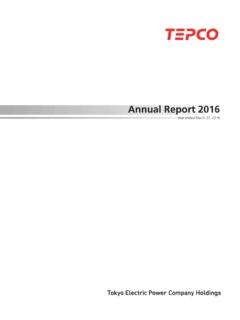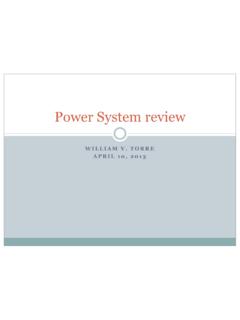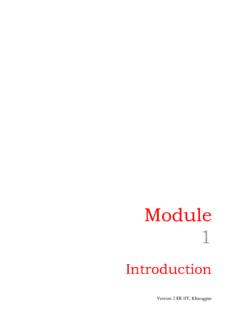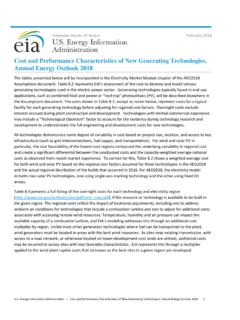Transcription of NEW POWEr cOST cOMPAriSONS - Garnaut …
1 NEW POWEr cost cOMPAriSONSL evelised cost of Electricity for a Range of New POWEr Generating TechnologiesrePort by the austraLiaN academy of techNoLoGicaL scieNces aNd eNGiNeeriNG (atse)MArch 2011 New POWEr cost comParisoNsLevelised cost of electricity for a range of New POWEr Generating technologiesreport by the australian academy of technological sciences and engineering Australian Academy of Technological Sciences and Engineeringthe australian academy of technological sciences and engineering (atse)New POWEr cost comparisoNsLevelised cost of Electricity for a Range of New POWEr Generating TechnologiesAustralian Academy of Technological Sciences and Engineering (ATSE)MARCh 2011 New POWEr cost cOMPAriSONS Levelised cost of electricity for a range of New POWEr Generating technologiesreport of a study by the australian academy of technological sciences and engineering (atse)this work is copyright.
2 Apart from any use permitted under the copyright act 1968, no part of it may be reproduced by any process without written permission from the publisher. requests and inquiries concerning reproduction rights should be directed to the :australian academy of technological sciences and engineeringLevel 1/ 1 Bowen crescentmelbourne Victoria 3004 australiaGPo Box 4055melbourne Victoria 3001 australiatelephone +613/03 9864 0900 Facsimile +613/03 9864 0930website : Dr John M Burgess FTSEP roject manager: Dr Vaughan Beck FTSE this work is also available as a PDF document on the atse website, report was prepared for and funded by the Garnaut climate change and production: coretext, : FsG Print management, Date of Publication: march 2011cover: istockphotoDisclaimerUse of the information contained in this report is at the user s risk. while every effort has been made to ensure the accuracy of that information, the australian academy of technological sciences and engineering does not make any warranty, express or implied, regarding cost OF ELECTRICITY australian academy of technological sciences and engineering (atse)SummaryLevelised cost of electricity (LCOE), which is used as a common cost measure for testing financial viability of POWEr generation, is calculated here for a range of emerging POWEr generation technologies using a financial model developed for a recent Australian Academy of Technological Sciences and Engineering report.
3 The methodolog y allows data originating from different sources, in particular from that ATSE report and from earlier reviews from Garnaut and the Treasury, to be compared on a common basis, and recent cost trends to be order to compare the LCOEs calculated in this report on a common basis, the capital costs, operating costs, and thermal efficiencies in two data sets have been used as input to the ATSE LCOE calculation. The two data sets considered are referred to in this report as the AEMO data and the previous Garnaut data. The AEMO data set is based on a recent reference data set published by the Australian Energ y Market Operator, while the previous Garnaut data set is based on data published by the Australian Government Treasury in 2008. In order to undertake the levelised cost of electricity calculation, common financial assumptions have been made for both these data sets.
4 This includes assuming a CO2 price according to scenario CPRS -5 defined in the previous Garnaut /Treasury studies, assuming a Renewable Energ y Certificate price of $50/MWh, and assuming the cost of capital from the previous Garnaut /Treasury study. In this way, the calculated LCOEs in this report are essentially comparing the differences associated with the two data sets under the same calculation assumptions. Because of the specific financial assumptions assumed in this work, the LCOEs reported here cannot be directly compared with those reported in either the ATSE report or the Treasury report. Further details on the assumptions used may be found in the Appendix to this results in this report comprise two sets of calculated LCOEs based on the previous Garnaut data and on the AEMO data, together with the assumptions noted above. The results comparing these show that: The fossil fuel-based technologies based on extension of current technologies (such as Combined Cycle Gas Turbines and pulverised coal boilers under supercritical steam conditions, with and without Carbon Capture and Storage), have similar levelised costs of electricity, with the results from the AEMO data being slightly higher in the short-to-medium term.
5 Newer coal-based technologies, such as Integrated Gasification Combined Cycle, with and without carbon capture and storage, have higher levelised costs of electricity in the case of the AEMO data. For the renewable technologies, geothermal has higher levelised electricity costs for the AEMO data, while solar technologies are predicted to have lower costs for the AEMO data due to increased rates of technolog y learning into the future in this recent data set. Although biomass combustion has a higher levelised cost using the AEMO data, this technolog y still has lower calculated levelised costs than many of the other LCOE method, which assumes a constant real CO2 and electricity price after the investment year, tends to favour fossil fuel technologies emitting cost OF ELECTRICITY australian academy of technological sciences and engineering (atse)Costs of Electricity GenerationMethodologyAny organisation investing in technolog y, such as an electricity generating company, must earn at least the cost of the capital it has borrowed from both equity investors and lending institutions in order to remain financially viable.
6 The capital cost is an important component but is only one constituent of the overall financial viability of a technolog y. In addition, other costs such as variable and fixed operating costs and charges such as a CO2 price must be taken into account. The key parameter that is used to judge the investment success of a technolog y is the Net Present Value (NPV), which is the value of the investment today taking both the capital cost and other costs into account, together with revenue. The NPV is calculated by determining the free cash flows each year from the investment, including the negative cash flows while the facility is being constructed, and discounting these cash flows to the present time using the cost of capital of the company. Details of this method to calculate NPV may be found in an earlier ATSE report, Low Carbon Energ y (ref.)
7 1).When the NPV is zero, the company is just earning the cost of capital, taking into account the tax deductibility of interest and the cost of equity. By adjusting the constant real electricity price over the life of the facility to achieve NPV = 0, the price of electricity to just make the technolog y economically viable can be obtained. This is termed the Levelised cost of Electricity (LCOE). This parameter has been calculated in this report using the ATSE methodolog y. The assumptions used here are given in detail in the Appendix to this consideredThe following technologies are considered: Combined Cycle Gas Turbine (CCGT) Combined Cycle Gas Turbine plus Carbon Capture and Storage (CCGT + CCS) Black Coal Supercritical (SC) Brown Coal Supercritical (SC) Black Coal Integrated Gasification Combined Cycle (IGCC) Black Coal Supercritical (SC) plus Carbon Capture and Storage (CCS) Black Coal IGCC plus Carbon Capture and Storage (CCS) Brown Coal Supercritical (SC) plus Carbon Capture and Storage (CCS) Wind Solar (Thermal) Central Receiver, without heat storage Solar Photovoltaic in a Flat Plate configuration Solar Photovoltaic (PV) with twin axis tracking Geothermal Enhanced Geothermal System (EGS) or Hot Rock Geothermal Biomass steam generation ( bagasse)LEVELISED cost OF ELECTRICITY australian academy of technological sciences and engineering (atse)
8 Some other technologies, such as Nuclear Generation Three (Gen III), not considered in the earlier Garnaut study are not included here. While the reference data set compiled by the Australian Energ y Market Operator/Department of Energ y, Resources and Tourism ( AEMO data) does not include any data for Nuclear Gen III, the earlier ATSE report (ref. 1) does contain cOMPAriSONS of Nuclear Gen III with most of the above technologies based on EPRI data commissioned for a recent DRET report (see below) and concludes that in purely financial terms this technolog y is competitive with many of the others. capital costs, therMal efficiencies and operating costsThe data from the previous Garnaut and Treasury reports (ref. 2 & 3) ( previous Garnaut data) have been compared in this report with the recent (2010) data ( AEMO data) published by the Australian Energ y Market Operator (AEMO) (ref.)
9 4) that relied on a report by the Electric POWEr Research Institute (EPRI) for DRET (ref. 5). This latter set of data was moderated by ACIL Tasman (ref. 6) and peer-reviewed by a reference group under the auspices of AEMO. Recently (2011), the AEMO data set has been further reviewed in a report by Worley Parsons (ref. 7), which mostly agreed with the data but noted that the future costs of the technologies will be affected by the $AU:$US exchange rate and future global scenarios. There is the possibility for future rapid change in all these data sets depending on the development and penetration of the technologies into the market place and their costsThe capital cost of a technolog y is expressed as the cost per unit generating capacity of a plant. It is an important component in influencing the cost of electrical energ y (the LCOE as used here) from that plant, and it is useful to examine the differences in capital costs between the current reference AEMO data set and the previous Garnaut study.
10 The raw data from the two studies show that capital costs and their learning curves have changed since the previous Garnaut report, as shown in Figures 1 to 3. In the case of brown coal with CCS, the AEMO data used a pulverised coal supercritical steam boiler, 70006000500040003000200010000$Figure 1 comparison of technology capital costs ($/kW) for 2015 WindCCGT + CCSCCGTS olar ThermalTowerBlack Coal SCBlack Coal IGCC +CCSB lack Coal SC+CCSB iomass SteamBrown Coal SCBrown Coal SC+CCSS olar PVTwin TrackSolar PVFlate plateBlack Coal IGCCG eothermal(best regions) Garnaut Capital ($/kW)AEMO Capital ($/kW)LEVELISED cost OF ELECTRICITY australian academy of technological sciences and engineering (atse)while the previous Garnaut data used gasification technologies. The two data sets are therefore not directly comparable, and only the AEMO data for the Brown Coal SC + CCS is included in this report.









